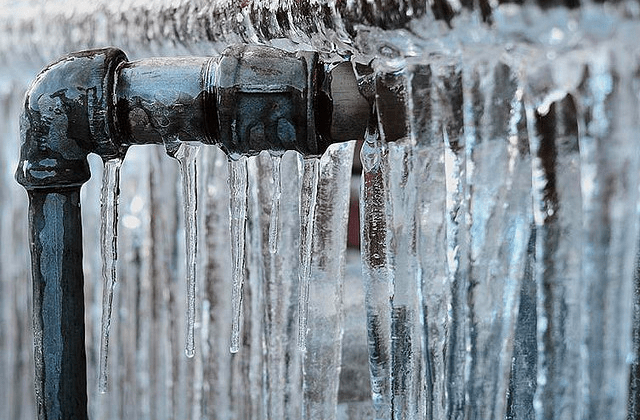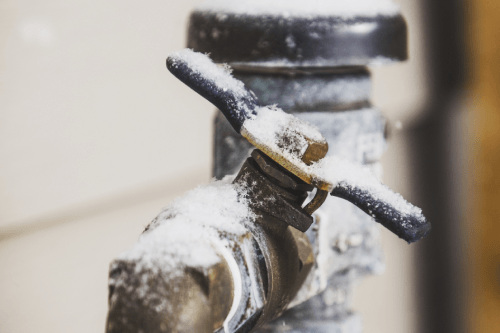The publisher is making a number of good pointers on the subject of How to prepare your home plumbing for winter weather as a whole in the article following next.

Winter can ruin your plumbing, especially by freezing pipelines. Here's exactly how to avoid it from happening and what to do if it does.
Intro
As temperature levels drop, the risk of icy pipes boosts, possibly leading to pricey repair services and water damages. Understanding just how to avoid frozen pipelines is vital for home owners in chilly climates.
Prevention Tips
Protecting susceptible pipelines
Wrap pipes in insulation sleeves or make use of warmth tape to shield them from freezing temperature levels. Concentrate on pipes in unheated or outside areas of the home.
Home heating methods
Keep interior areas sufficiently heated up, particularly locations with pipes. Open up closet doors to allow warm air to circulate around pipes under sinks.
Exactly how to recognize icy pipes
Try to find decreased water flow from taps, unusual smells or noises from pipes, and visible frost on subjected pipelines.
Long-Term Solutions
Structural modifications
Think about rerouting pipelines far from exterior wall surfaces or unheated areas. Add extra insulation to attics, cellars, and crawl spaces.
Upgrading insulation
Purchase top quality insulation for pipes, attic rooms, and walls. Correct insulation assists maintain consistent temperature levels and lowers the risk of icy pipes.
Shielding Outside Plumbing
Yard hose pipes and outside taps
Detach and drain yard hoses prior to winter season. Mount frost-proof faucets or cover exterior taps with shielded caps.
Comprehending Frozen Pipes
What triggers pipes to freeze?
Pipes freeze when revealed to temperature levels listed below 32 ° F (0 ° C) for expanded durations. As water inside the pipes ices up, it broadens, putting pressure on the pipe wall surfaces and potentially causing them to break.
Threats and problems
Icy pipes can lead to supply of water disruptions, property damages, and pricey repair work. Burst pipes can flooding homes and cause considerable architectural damages.
Indications of Frozen Pipes
Recognizing icy pipes early can avoid them from rupturing.
What to Do If Your Pipelines Freeze
Immediate activities to take
If you believe icy pipes, maintain taps open to relieve pressure as the ice melts. Utilize a hairdryer or towels soaked in hot water to thaw pipelines slowly.
Conclusion
Preventing icy pipelines calls for positive steps and quick actions. By comprehending the reasons, indicators, and safety nets, property owners can safeguard their pipes throughout winter.
6 Proven Ways to Prevent Frozen Pipes and Protect Your Home
Disconnect and Drain Garden Hoses
Before winter arrives, start by disconnecting your garden hoses and draining any remaining water. Close the shut-off valves that supply outdoor hose bibs and leave the outdoor faucet open to allow any residual water to drain. For extra protection, consider using faucet covers throughout the colder months. It’s also important to drain water from any sprinkler supply lines following the manufacturer’s directions.
Insulate Exposed Pipes
Insulating your pipes is an effective way to prevent freezing. Pipe insulation is readily available at home improvement stores and is relatively inexpensive. Pay close attention to pipes in unheated areas such as the attic, basement, crawl spaces, or garage. Apply foam insulation generously to create a buffer against the cold. You can also wrap your pipes in heat tape or thermostat-controlled heat cables for added warmth.
Seal Air Leaks
Inspect your home for any cracks or openings that could let in cold air. Seal any holes around the piping in interior or exterior walls, as well as the sill plates where your home rests on its foundation. Additionally, make sure to keep your garage door closed unless you’re entering or exiting. Leaving it open creates a significant air leak that can lead to frozen pipes.
Allow Warm Air Circulation
During cold snaps, it’s essential to allow warm air to circulate evenly throughout your home. Leave interior doors ajar to promote better airflow. Open kitchen and bathroom cabinets to help distribute heat consistently around the rooms. If you have small children or pets, be sure to remove any household chemicals or potentially harmful cleaners from open cabinets for safety.
Let Faucets Drip
A small trickle of water can make a big difference in preventing ice formation inside your pipes. When temperatures drop significantly, start a drip of water from all faucets served by exposed pipes. This continuous flow helps prevent the water from freezing. Additionally, running a few faucets slightly can relieve pressure inside the pipes, reducing the chances of a rupture if the water inside does freeze.
https://choateshvac.com/6-proven-ways-to-prevent-frozen-pipes-and-protect-your-home/

I was shown that report about 6 Ways to Prevent Frozen Pipes from an acquaintance on another blog. Do you know about another individual who is inquisitive about the niche? Please feel free to promote it. We treasure your readership.
Go Deal Now